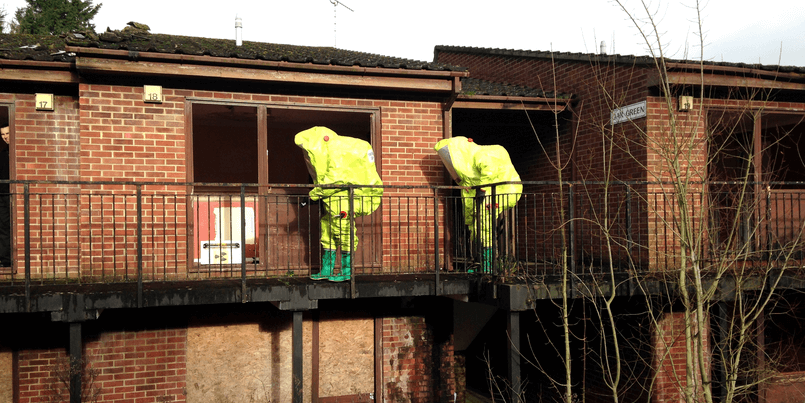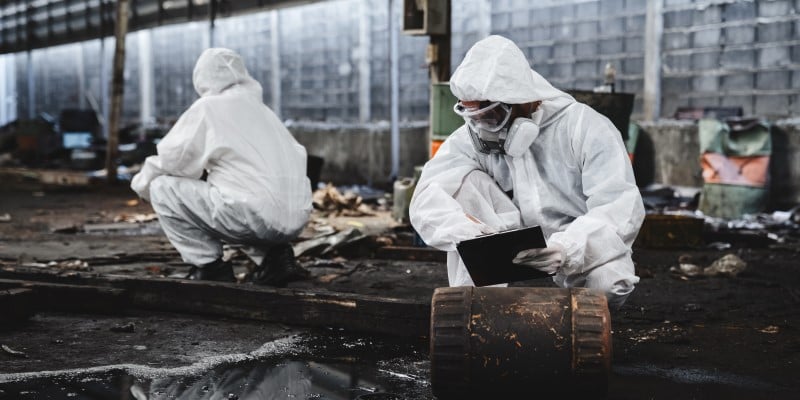 Radiation training has always been an inherently challenging exercise for first responders. After all, how do you ensure that your crews recognize and understand the very real dangers of this silent and invisible threat?
Radiation training has always been an inherently challenging exercise for first responders. After all, how do you ensure that your crews recognize and understand the very real dangers of this silent and invisible threat?
Thankfully exposure to dangerous levels of ionizing radiation is not something that most first response teams are likely to encounter that frequently. But having the right training - and having access to the resources and equipment to be able to train as often as necessary - is absolutely essential.
Most radiation detection instruments aren't especially difficult to use. The skill, however, comes in being able to make sense of the detector's readings to avoid exposure and keep personnel, civilians and the environment safe.
The use of replica simulator detectors for CBRN and HazMat is widely recognized as being vital in enabling the most realistic and engaging hands-on radiation safety training exercises possible. But what is the best way to source the equipment that you need?
Maybe you're looking to obtain simulator equipment for occasional radiation safety training exercises?Perhaps you've been asked to facilitate an internal training programme or to demonstrate compliance? Or maybe you're wanting to source a few additional stand-alone simulation instruments to enhance a specific training scenario?
When it comes to obtaining simulator detectors there are several potential approaches that can be taken. You can choose to purchase the equipment outright; you can opt to rent the equipment so it's available as and when you need it; or you may prefer a subscription service which enables you to pay as you go.
You might even be able to take advantage of a corporate gifting scheme (popular in the US), whereby a company or industry will invest in equipment to support a local fire station or first response team.
But whatever your preferred strategy, an ideal first step will be to go directly to a manufacturer of CBRN/HazMat simulator detectors to understand exactly what equipment is available and what's going to best serve your purposes.
Radiation safety training in action
Opting to train with CBRN simulator detector equipment proved to be both a practical and an effective solution for firefighter Ross Smallcombe and his crew at the Ryde Fire Station on the UK's Isle of Wight.
During the course of a routine daily equipment check, Ross realised that there was a potential gap in the crew's understanding of how to handle the Rados RDS 200 Universal Survey Meter - a crucial item of equipment for radiation detection.
But having only the real detectors at his disposal he knew that attempting to implement realistic training with the RDS 200 simply wasn't going to be an option.
His solution? To source a realistic simulator radiation detector - the RDS-200-SIM - for his team's training purposes.
Says Ross: "I began collecting as much information as I could. I came across a company ARGON Electronics. This company specialises in CRBN (Chemical Biological Radiation Nuclear) Hazmat simulator training systems, supplying a very varied and comprehensive selection of simulators including the Rados RDS200 SIM.
"After visiting the Argon website I contacted them to enquire about the use of a Rados RDS200 simulator. Within an hour I was having a conversation with Steven Pike (Managing Director) who was willing to assist me with my plans."
Argon provided Ross with a simulator detector training kit that included simulation emitters (both directional and spherical), simulation powders and liquids, the GMP-11-SIM simulation beta contamination probe and EPD-MK2-SIM (personal dosimeters).
Says Ross: "This was fantastic news now I could plan a training package based on realistic scenarios, whilst evaluating this new equipment."
Benefits for radiation safety training outcomes
Being able to experience simulator equipment first-hand was a vital step in enabling Ross and his crew to fulfil their training requirements and extend their knowledge within the hazardous and challenging field of radiation safety.
As Ross explains: "The simulation kit enabled us to train in a very realistic and practical way. The multi-directional emitters were excellent, enabling us to adjust strength and direction (and) giving us options within the training environment.
"The simulation powders and liquids were a very valuable addition, allowing trainers to contaminate people, areas and objects such as food and consumable liquids - and small amounts were more than sufficient to gather readings."







